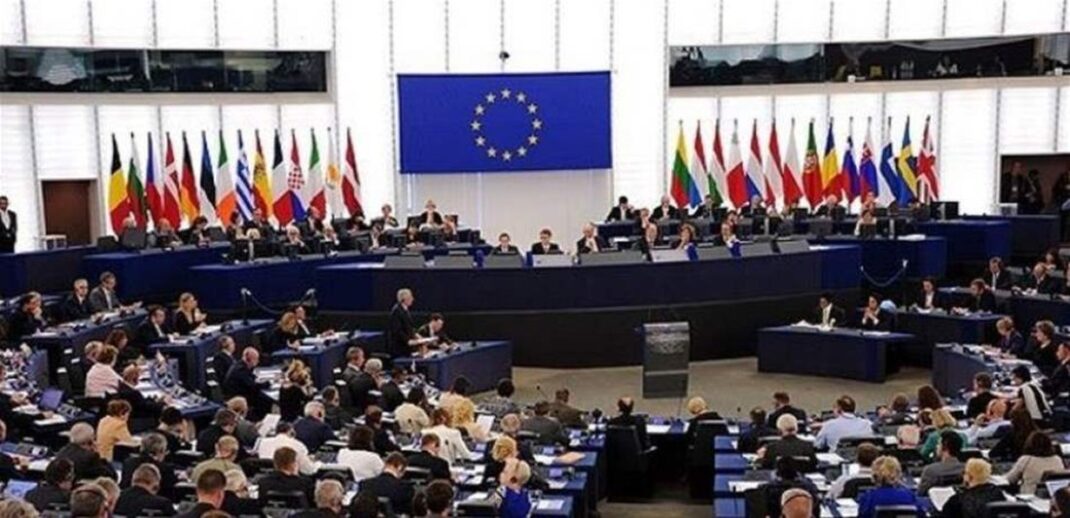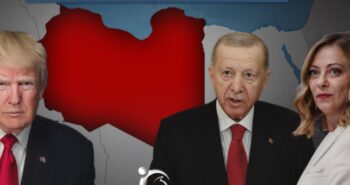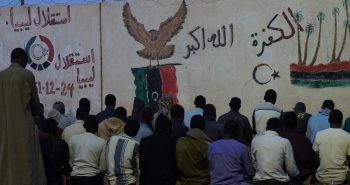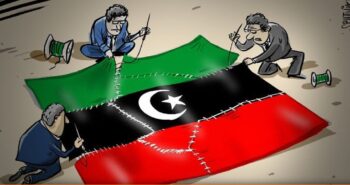Wolfram Lacher

Consolidating the Detention System, Empowering Warlords and Provoking Backlash from the Libyan Public.
The European Commission, Italy, and Greece are seeking to curb irregular migration through Libya. These efforts come at a time when several aspects of European Union (EU) migration policy in Libya must be acknowledged as having failed. This is particularly true of attempts to improve conditions in detention centres, and the situation of migrant workers and refugees more broadly.
Most recently, a campaign by Libyan authorities against what they portrayed as EU plans to permanently settle migrants in the country showed that European policy is provoking considerable backlash. As the softer components of this policy have reached an impasse, it has been stripped to its hard core, namely arrangements with Libyan security actors to prevent departures, as well as support for interceptions at sea and returns to countries of origin. These measures are inextricably tied to Libya’s system of arbitrary detention, which serves criminal interests. European attempts to disavow this system have been unconvincing and are preventing a serious reckoning with the political costs involved.
A modest rise in irregular arrivals via Libya over the past two years has prompted a flurry of European shuttle diplomacy, which intensified in the summer of 2025. Whereas irregular arrivals along other migration routes to the EU declined in the first half of the year, there was a sudden surge from eastern Libya to Crete, generating alarm in Greece.
In response, Commission President Ursula von der Leyen dispatched Commissioner for Internal Affairs and Migration Magnus Brunner to Tripoli and Benghazi. Joined by ministers from Greece, Italy, and Malta, Brunner met with representatives of the internationally recognised government in Tripoli in July to press for tougher measures to block departures – without any concrete results. The subsequent visit to Benghazi was cut short after the region’s de facto ruler, Khalifa Haftar, made an audience conditional on having the delegation officially meet his parallel government, which is not internationally recognised.
When the Europeans refused, they were compelled to leave. Since then, Greece has launched training programmes for Haftar’s forces, following Italy’s lead. But European efforts to court Haftar go even further. At the end of July, the EU naval operation Irini intercepted a container ship whose inspection in a Greek port found that it was carrying armoured vehicles to Benghazi. Although this was a clear violation of the United Nations (UN) arms embargo, the Greek government made sure that the vessel proceeded to Libya, apparently fearing that seizing it would jeopardise cooperation on migration. Meanwhile, crossings from eastern Libya to Crete continue, even though Haftar’s forces could prevent them.
This sequence of events illustrates the state of EU migration policy in Libya. The EU’s cooperation on migration with Libyan authorities, which it has pursued since 2017, has become increasingly ineffective, even when measured by the number of arrivals. Yet, European policymakers are doubling down on their strategy of seeking arrangements with Haftar and western Libyan militia leaders to halt departures.
In doing so, they are making themselves dependent on partners who are escalating their demands. The fact that a relatively small number of arrivals in Crete – just 7,336 in the first half of 2025 – triggered such alarm in Europe is only likely to embolden actors such as Haftar to raise the price for their cooperation.
The EU’s renewed push to contain transit migration through Libya provides an opportunity to assess the workings and consequences of its migration policy in the country. Beyond Haftar’s growing demands, there are further signs that the EU’s approach is reaching its limits. Although a change of course is unlikely – given the absence of alternative strategies to reduce arrivals – a sober evaluation of the political costs is essential.
Cooperating with predatory actors
EU migration cooperation with Libya, led by Italy, includes a range of measures taken by both Italy and the EU, as well as activities financed by the EU and implemented by international organisations. Together these measures are intended to minimise the number of people arriving irregularly in the EU via Libya across the Mediterranean.
The most prominent of these measures is the Italian and European support provided to the Libyan coastguard for interception and rescue operations. Italy and the EU have supplied the coastguard with dozens of boats and ships, ensured their maintenance, and trained their personnel.
With European backing, a Libyan search and rescue zone was established in late 2017 together with a Maritime Rescue Coordination Centre (MRCC) in Tripoli. Since then, the Italian and Maltese authorities and the EU border agency Frontex – and until 2020 also the EU naval operation Sophia – have been passing the coordinates of migrant boats primarily to the Libyan MRCC and coastguard to coordinate interception and rescue efforts.
The coastguard then transfers people it intercepts to units of the Department for Combating Illegal Migration (DCIM). This Interior Ministry department incarcerates people in detention centres, where they face systematic abuse, torture, rape, extortion, forced labour, and often catastrophic sanitary conditions. Detention is arbitrary, since there is no legal remedy against it: Libya makes no distinction between refugees and other migrants, as the country has no asylum system and has not signed the Geneva Refugee Convention.
Pregnant women and children of all ages are detained without exception. DCIM units are usually closely tied to militias, for whom detention centres represent a source of income. Business models range from embezzling state funds for operating the centres to releasing prisoners in exchange for payment and exploiting them through forced labour or prostitution.
In its final report in 2023, the Independent Fact-Finding Mission on Libya, established by the UN Human Rights Council, concluded that there were reasonable grounds to believe that systematic abuse in state-run detention centres amounted to crimes against humanity, to which the EU was contributing through its support for interceptions.
European support for the coastguard has increased the likelihood of migrants being intercepted at sea.
In addition, Italian and European measures have also raised the risk of drowning. Since 2018, Italy has taken numerous legal steps to obstruct or block sea rescue operations by non-governmental organisations (NGOs) in the Mediterranean. Germany stopped providing financial support for such operations in 2025.
At the European level, patrols by Operation Sophia were suspended in 2019, and its successor – Operation Irini, established in 2020 – was never given a mandate for sea rescue missions. Irini’s area of operation was shifted to the sea off eastern Libya, which at the time was far from migration routes. In addition, regular reviews are conducted to assess whether the presence of Operation Irini’s ships could act as a pull factor for migration – as some claim – and whether the operational area should be adjusted accordingly. Such steps are justified on the grounds that they reduce the overall number of crossings, and thereby also the number of deaths.
A more plausible explanation is the intention to deter crossings by increasing the risk of death, which has risen sharply. Between 2017 and 2019, the proportion of deaths during attempted crossings on the central Mediterranean route rose from 2 to 4.8 per cent. In absolute numbers, the central Mediterranean remains the world’s deadliest migration route.
Yet, without measures being taken on land, those taken at sea would have produced few meaningful results. In July 2017, arrivals from Libya suddenly dropped and then remained at a low level until 2021 (see figure). Interceptions by the Libyan coastguard were by no means the main reason for this development, as armed groups in western Libyan coastal cities had begun preventing departures.
The main driver behind this shift was the prospect of gaining official status – and therefore funds – as state security forces, as well as escaping prosecution and international sanctions. Both the government in Tripoli and Italian officials used these incentives when engaging militia leaders.
This incentive structure for armed group still holds today. Operating in counter-migration offers the cover of state legitimacy, international contacts, and opportunities for enrichment through the exploitation of migrants in detention centres. However, this calculus is continually shifting as domestic power relations change and Libyan actors adjust their bargaining positions vis-à-vis Europe.
A series of conflicts with the Tripoli government starting 2021 prompted armed groups in western coastal cities to once again begin facilitating migrant departures, which is one reason why arrivals from Libya have increased since 2022. Many units whose primary business model revolves around intercepting and detaining migrants maintain a foothold in smuggling networks, moving between the two markets as circumstances dictate.
The same applies to the east of the country, which is controlled by the Haftar family and, because of its geographical position, was not used for crossings until 2021.
From mid-2022, thousands of people suddenly began arriving in Italy after flying to eastern Libya and departing from there on large fishing boats, with Haftar’s forces central to orchestrating these movements. The Italian government responded by officially receiving Haftar in Rome in May 2023 and offering him cooperation. Around the same time, Haftar faced negative international media coverage after the Pylos disaster in June 2023, in which more than 600 people died when a boat that had departed from eastern Libya sank.
From July 2023 onward, the number of crossings from eastern Libya to Italy fell sharply, and in 2024 the numbers remained negligible (see figure). Italy has since expanded its military cooperation with Haftar’s forces. The sudden increase in arrivals from eastern Libya to Crete in the first half of 2025 also appears to have been politically motivated. As described above, Haftar sought to use his control over the migration route as leverage to improve the international standing of his parallel government.
At the same time, the Haftar family has continued to profit from migration to Italy, even while preventing departures from eastern Libyan shores. The main nationalities of those arriving in Italy from western Libya in 2024 and 2025 have been Bangladeshi, Egyptian, and Pakistani, most of whom travelled via eastern Libya.
Italian officials have been claiming for several years now that arrivals from Libya are the result of deliberate Russian efforts to destabilise Europe, pointing to Russia’s military presence in Haftar’s territory. Similar concerns that Russia could politically instrumentalise migration via Libya are now being voiced within the European Commission. To date, there is no evidence to support such claims. By contrast, the Haftar family’s political instrumentalisation of migration is obvious, as is the willingness of some EU member states to accommodate the Haftars’ demands.
***
Dr Wolfram Lacher is a researcher in the Africa and Middle East Research Division.
_______________





